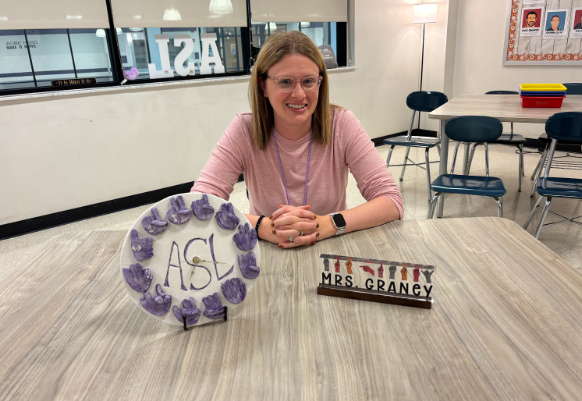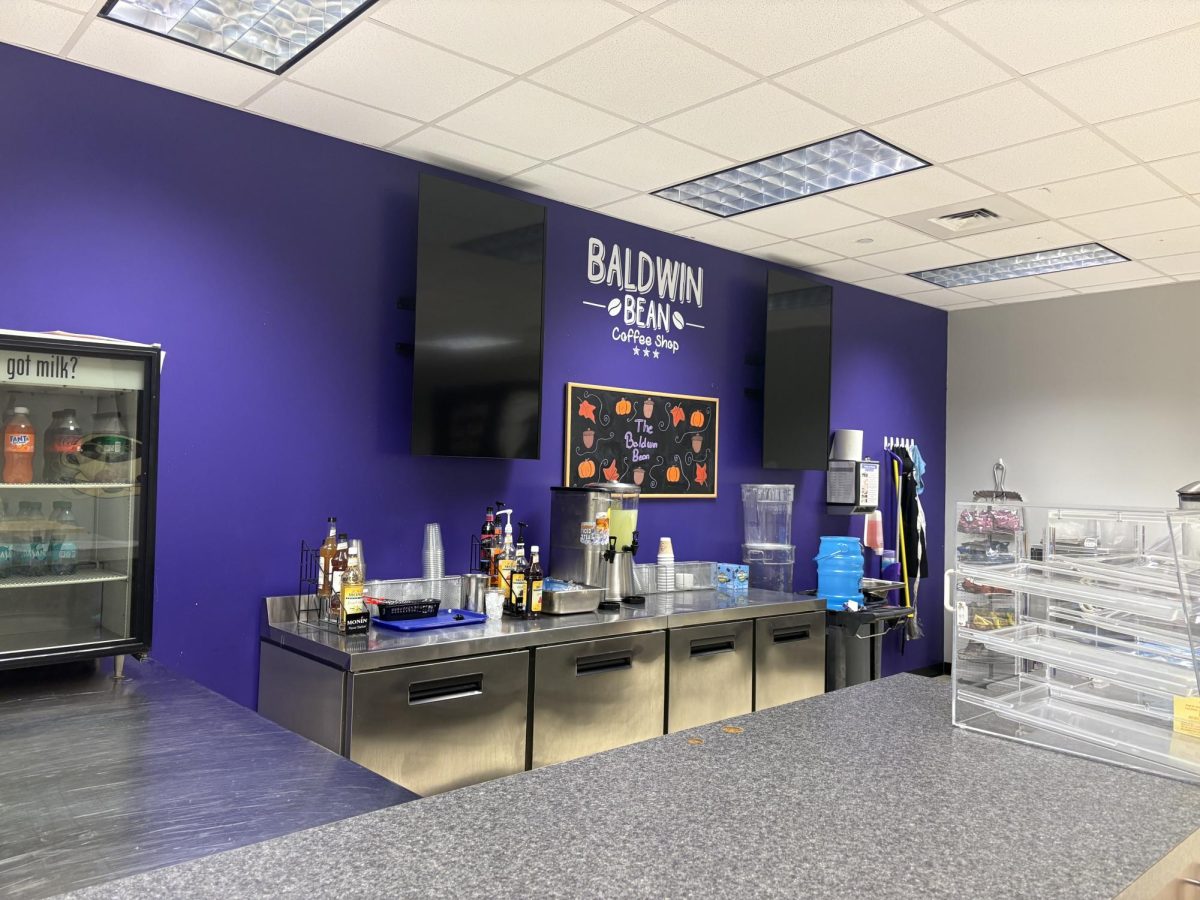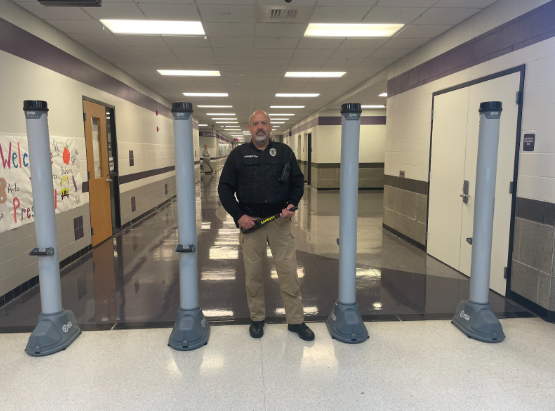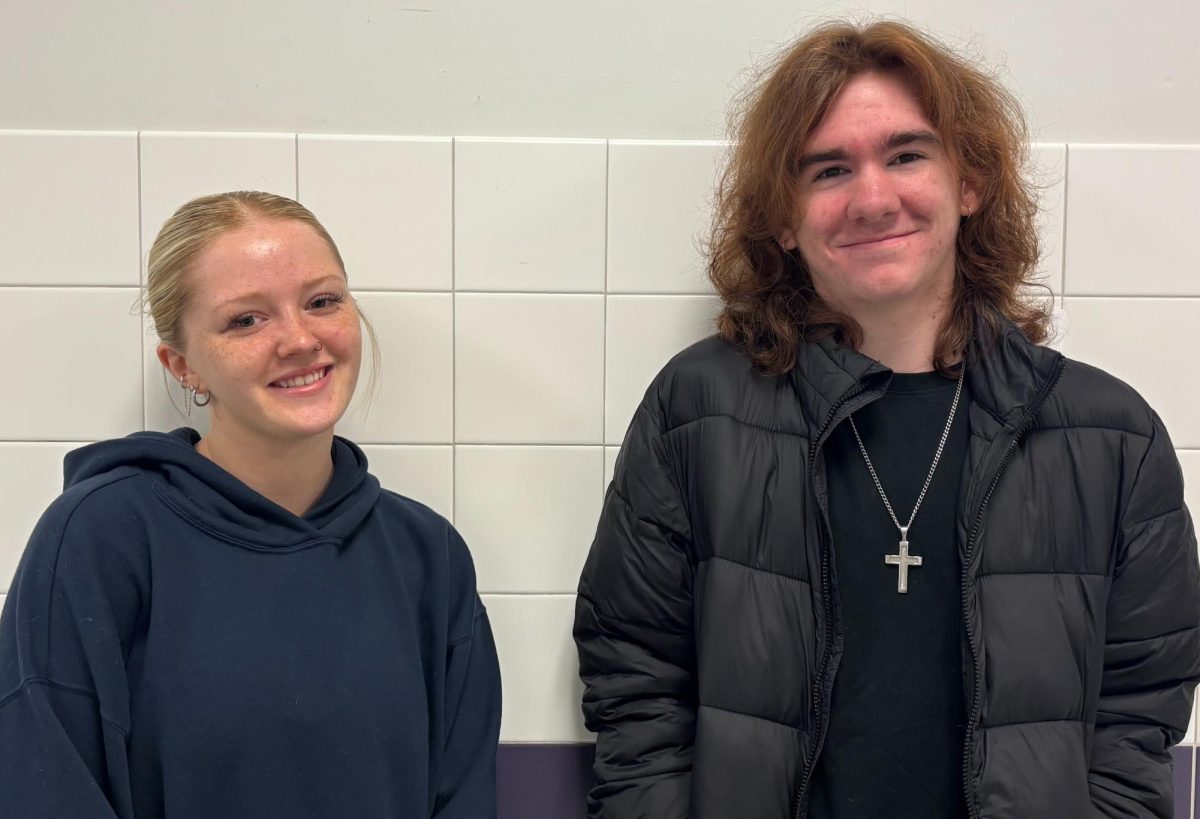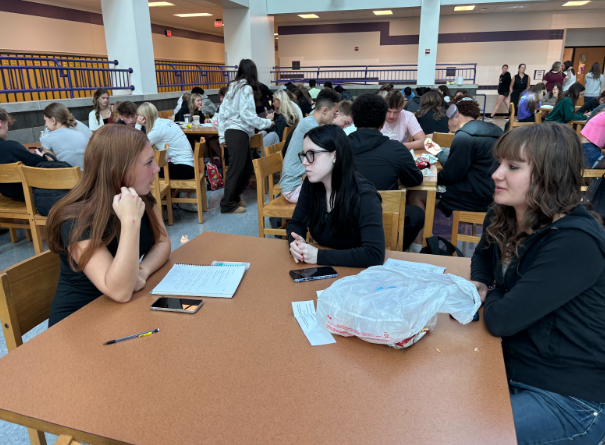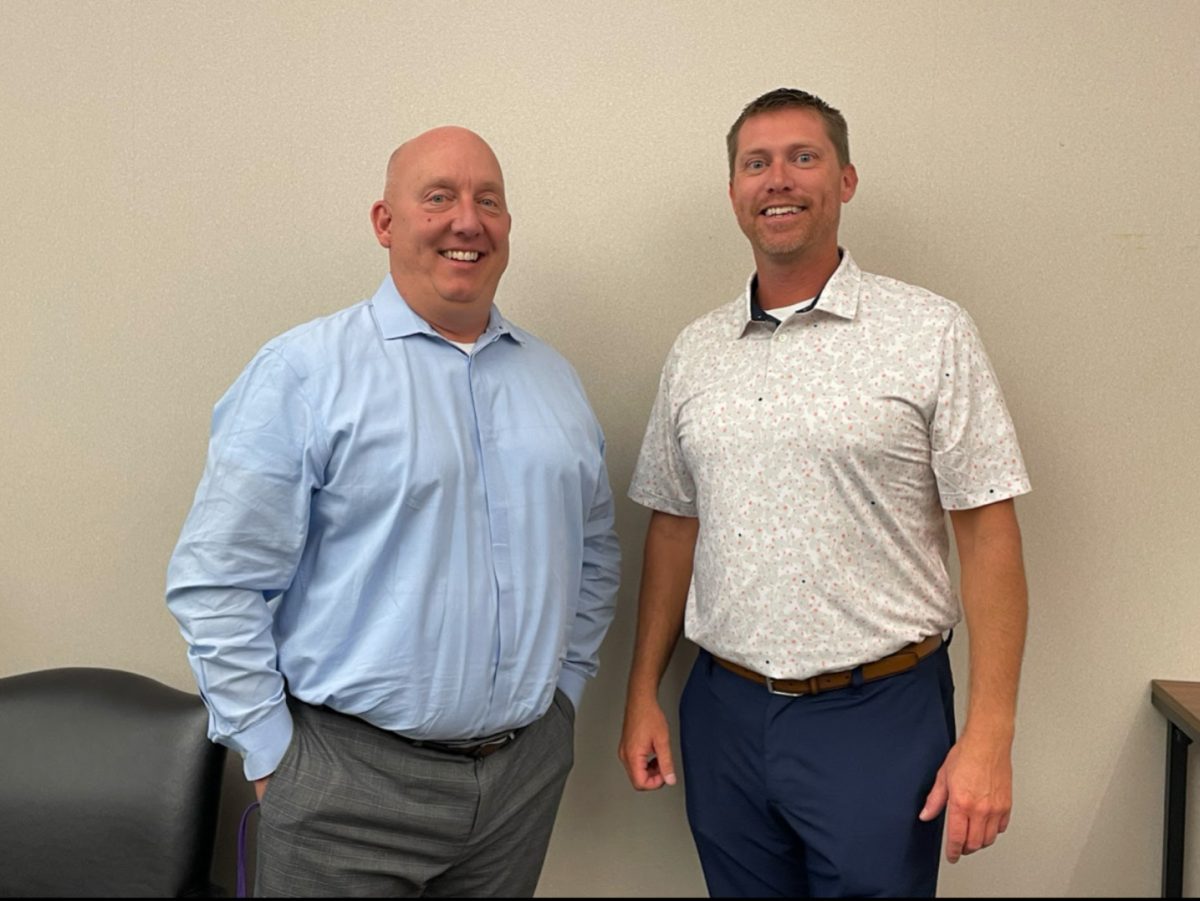Junior Bri Kalogeris recently attended a 90-minute school dinner but never said a single word. The event was a silent dinner hosted by Baldwin’s American Sign Language Club.
“It was also cool and exciting as a person learning ASL at Baldwin,” Kalogeris said. “I loved that this dinner gave me a chance to get more experience and be more immersed in the language.”
The Nov. 6 silent dinner was made possible in part by a state grant the school district won. Called the Developing Future Special Educators grant, it also is helping provide for a second silent dinner in the spring, a new ASL evening course open to the community, and some new furniture for the ASL classroom.
The silent dinner earlier this month was the second one run by the ASL Club, with the club funding the first one last year. These events give students an opportunity to communicate with members of the Deaf community who also attend.
“The silent dinner was a truly fun experience for me. I got to meet more deaf people outside of class and apply what we were learning in class to the event. It was cool to see how different the experience was for us as students,” club member Justine Vukelich said.
Twenty-nine people attended the silent dinner.
“We had a lot of engagement between the students and people apart from the Deaf community. I think it’s clearly a new language for some people, so most of the dinner was basic signing. Although it was basic, I still think people enjoyed it and had a lot of fun,” Graney said.
The ASL course at Baldwin has grown since its beginning in the 2022-2023 school year, with more sections being taught and the formation of the ASL Club. Now, also through the state grant, Baldwin-Whitehall is offering an eight-session ASL class on Monday nights for community members, families, teachers, and students.
The class focuses on basic greetings, introductions, and basic vocabulary. Students were primarily the group that attended the first night class on Nov. 4 – both those currently in the ASL class and those who could not fit it into their schedules.
“The first night class was great,” Graney said. “Since we’ve only had one class so far open to the community, it is too early to tell the benefits of the classes, but during the dinners the kids are intuitive and ready to learn.”
Another benefit of the state grant is that the ASL classroom had been updated with some new furniture. Graney has added new tables to desks, providing a new seating arrangement for more interactive learning.
The state’s long-term plan is to encourage more people to become special education teachers, Graney said. The ASL class, club, dinners, and after-school classes allow students and community members to feel more comfortable in the language, which is also a stepping stone for students wanting to pursue a career in Special Education.
“Our main goal was to promote ASL, using dynamics from our classrooms to help engage students. Since the first community dinner, I feel as if we have already achieved our main goal,” Graney said. “I am grateful to the state and the administrators in the district for providing us this opportunity and the impact we can make with it.”

